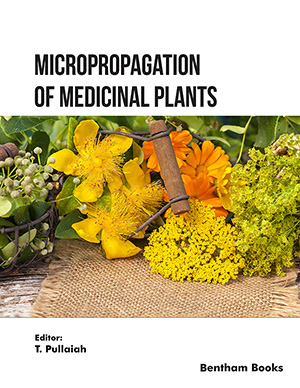Abstract
Despite antimicrobial resistance, which is attributed to the misuse of broad-spectrum antibiotics, antibiotics can indiscriminately kill pathogenic and beneficial microorganisms. These events disrupt the delicate microbial balance in both humans and animals, leading to secondary infections and other negative effects. Antimicrobial peptides (AMPs) are functional natural biopolymers in plants and animals. Due to their excellent antimicrobial activities and absence of microbial resistance, AMPs have attracted enormous research attention. We reviewed the antibacterial, antifungal, antiviral, antiparasitic, as well as antitumor properties of AMPs and research progress on AMPs. In addition, we highlighted various recommendations and potential research areas for their progress and challenges in practical applications.
Keywords: Antimicrobial peptides, microbial resistance, antimicrobial activity, action mechanism, achievement transformation, clinical application.
[http://dx.doi.org/10.1007/s40257-021-00650-3] [PMID: 34674160]
[http://dx.doi.org/10.4103/jms.jms_25_17]
[http://dx.doi.org/10.1128/mSystems.00360-21] [PMID: 34100640]
[http://dx.doi.org/10.1016/j.phrs.2020.105276] [PMID: 33161137]
[http://dx.doi.org/10.1128/mBio.01847-21] [PMID: 34579574]
[http://dx.doi.org/10.1038/s41467-019-12364-6] [PMID: 31586049]
[http://dx.doi.org/10.1007/s00253-014-5792-6] [PMID: 24811407]
[http://dx.doi.org/10.3390/antibiotics10080990] [PMID: 34439040]
[http://dx.doi.org/10.3389/fmicb.2021.661195] [PMID: 34248873]
[http://dx.doi.org/10.1093/nar/gkv1278] [PMID: 26602694]
[http://dx.doi.org/10.1093/nar/gkr1063] [PMID: 22110032]
[http://dx.doi.org/10.1093/database/baw165] [PMID: 28077567]
[http://dx.doi.org/10.1002/pro.3714] [PMID: 31441165]
[http://dx.doi.org/10.1093/bioinformatics/btm068] [PMID: 17341497]
[http://dx.doi.org/10.1371/journal.pone.0066557] [PMID: 23825543]
[http://dx.doi.org/10.1007/s13594-013-0153-2]
[http://dx.doi.org/10.1093/bioinformatics/bts141] [PMID: 22467909]
[http://dx.doi.org/10.1093/nar/gkn655] [PMID: 18836196]
[http://dx.doi.org/10.1186/1471-2180-10-22] [PMID: 20105292]
[http://dx.doi.org/10.1016/j.dci.2005.04.003] [PMID: 15963564]
[http://dx.doi.org/10.1093/nar/gkh077] [PMID: 14681489]
[http://dx.doi.org/10.1371/journal.pone.0054908] [PMID: 23359817]
[http://dx.doi.org/10.1093/nar/gkt1191] [PMID: 24285301]
[http://dx.doi.org/10.3390/md19060328] [PMID: 34204046]
[http://dx.doi.org/10.1093/nar/gkw243] [PMID: 27060142]
[http://dx.doi.org/10.3390/toxins9090266] [PMID: 28867788]
[http://dx.doi.org/10.3389/fmicb.2020.582779] [PMID: 33178164]
[http://dx.doi.org/10.3390/antibiotics9010024] [PMID: 31941022]
[http://dx.doi.org/10.1073/pnas.92.1.195] [PMID: 7529412]
[http://dx.doi.org/10.3389/fmicb.2020.593215] [PMID: 33193264]
[http://dx.doi.org/10.1016/j.peptides.2011.08.002] [PMID: 21849157]
[http://dx.doi.org/10.1586/14787210.5.6.951] [PMID: 18039080]
[http://dx.doi.org/10.1002/psc.3294] [PMID: 33283388]
[http://dx.doi.org/10.1016/j.ejps.2020.105665] [PMID: 33285267]
[http://dx.doi.org/10.3390/toxins12120771] [PMID: 33291852]
[http://dx.doi.org/10.1016/j.chembiol.2018.02.004] [PMID: 29526712]
[http://dx.doi.org/10.1021/bi0201466] [PMID: 12119035]
[http://dx.doi.org/10.1007/s00011-005-0062-9] [PMID: 16673155]
[http://dx.doi.org/10.1002/psc.3291] [PMID: 33283398]
[http://dx.doi.org/10.1016/j.bbrc.2020.11.113] [PMID: 33280820]
[http://dx.doi.org/10.1021/bi702036s] [PMID: 18439024]
[http://dx.doi.org/10.1016/j.dci.2007.06.009] [PMID: 17716729]
[http://dx.doi.org/10.1128/AEM.00092-08] [PMID: 18539790]
[http://dx.doi.org/10.1128/AAC.50.4.1449-1457.2006] [PMID: 16569864]
[http://dx.doi.org/10.1038/s41587-019-0222-z] [PMID: 31427820]
[http://dx.doi.org/10.1073/pnas.1909585117] [PMID: 31843919]
[http://dx.doi.org/10.1126/scitranslmed.aan4044] [PMID: 29321257]
[http://dx.doi.org/10.2174/157016207781023947] [PMID: 17627504]
[http://dx.doi.org/10.1371/journal.pone.0124706] [PMID: 25909853]
[http://dx.doi.org/10.4049/jimmunol.1502478] [PMID: 26873992]
[http://dx.doi.org/10.1183/13993003.00665-2015] [PMID: 26585423]
[http://dx.doi.org/10.4049/jimmunol.172.3.1763] [PMID: 14734759]
[http://dx.doi.org/10.1111/hepr.12627] [PMID: 26606891]
[http://dx.doi.org/10.1002/bip.22871] [PMID: 27161201]
[http://dx.doi.org/10.1016/j.peptides.2017.04.002] [PMID: 28400226]
[http://dx.doi.org/10.3390/md17090503] [PMID: 31466296]
[http://dx.doi.org/10.1016/j.jiac.2014.08.003] [PMID: 25182867]
[http://dx.doi.org/10.2174/0929867326666190805151654] [PMID: 31385762]
[http://dx.doi.org/10.2174/0929866525666180628161107] [PMID: 29956606]
[http://dx.doi.org/10.3390/molecules19079228] [PMID: 24991756]
[http://dx.doi.org/10.1016/j.fsi.2018.03.044] [PMID: 29601993]
[http://dx.doi.org/10.1099/0022-1317-79-4-731] [PMID: 9568968]
[http://dx.doi.org/10.2174/0929866526666190925152957] [PMID: 31553285]
[http://dx.doi.org/10.1358/dof.2010.035.03.1452077] [PMID: 20495663]
[http://dx.doi.org/10.1111/imb.12681] [PMID: 33150694]
[http://dx.doi.org/10.1046/j.1365-313x.2001.00967.x] [PMID: 11208019]
[http://dx.doi.org/10.3390/molecules190812280] [PMID: 25153857]
[http://dx.doi.org/10.1371/journal.pone.0018550] [PMID: 21533249]
[http://dx.doi.org/10.1016/j.plaphy.2017.12.012]
[http://dx.doi.org/10.1006/abbi.2000.1791] [PMID: 10845709]
[http://dx.doi.org/10.1177/0022034514526239] [PMID: 24736699]
[http://dx.doi.org/10.3389/fcimb.2021.666900] [PMID: 34178720]
[http://dx.doi.org/10.3390/molecules200815392] [PMID: 26305243]
[http://dx.doi.org/10.2217/fmb.12.85] [PMID: 22953706]
[http://dx.doi.org/10.3390/biom11070984] [PMID: 34356608]
[http://dx.doi.org/10.1080/14712598.2017.1315402] [PMID: 28368216]
[http://dx.doi.org/10.1371/journal.pntd.0002491] [PMID: 24147170]
[http://dx.doi.org/10.1016/S0196-9781(01)00504-6] [PMID: 11587797]
[http://dx.doi.org/10.1016/j.exppara.2007.01.022] [PMID: 17376436]
[http://dx.doi.org/10.1016/j.ibmb.2004.03.020] [PMID: 15242708]
[http://dx.doi.org/10.1016/j.molimm.2008.06.025] [PMID: 18657321]
[http://dx.doi.org/10.1016/j.biochi.2010.01.011] [PMID: 20097251]
[http://dx.doi.org/10.3389/fphar.2014.00275] [PMID: 25566072]
[http://dx.doi.org/10.1371/journal.pntd.0000373] [PMID: 19190729]
[http://dx.doi.org/10.1371/journal.pone.0157673] [PMID: 27384541]
[http://dx.doi.org/10.1111/exd.13314] [PMID: 28191680]
[http://dx.doi.org/10.1016/j.molbiopara.2008.12.006] [PMID: 19146887]
[http://dx.doi.org/10.3389/fmicb.2013.00296] [PMID: 24101918]
[http://dx.doi.org/10.1371/journal.pntd.0002307] [PMID: 23875042]
[http://dx.doi.org/10.1016/j.bioorg.2020.104506] [PMID: 33276980]
[http://dx.doi.org/10.1159/000490183] [PMID: 29843147]
[http://dx.doi.org/10.1007/s00018-017-2604-z] [PMID: 28770291]
[http://dx.doi.org/10.1016/S0005-2736(97)00051-5] [PMID: 9247173]
[http://dx.doi.org/10.1080/01926230701320337] [PMID: 17562483]
[http://dx.doi.org/10.7554/eLife.45061] [PMID: 31358113]
[http://dx.doi.org/10.1158/1078-0432.CCR-09-0484] [PMID: 19861439]
[http://dx.doi.org/10.1021/acschembio.7b00459] [PMID: 28741926]
[http://dx.doi.org/10.1016/j.peptides.2012.07.001] [PMID: 22800692]
[http://dx.doi.org/10.1021/acsami.5b11332] [PMID: 26914154]
[http://dx.doi.org/10.1039/C8BM00807H] [PMID: 30187036]
[http://dx.doi.org/10.1111/jcmm.13021] [PMID: 27995765]
[http://dx.doi.org/10.4049/jimmunol.170.11.5583] [PMID: 12759437]
[http://dx.doi.org/10.1016/j.jgar.2021.03.022] [PMID: 33852935]
[http://dx.doi.org/10.1371/journal.pone.0092597] [PMID: 24675668]
[http://dx.doi.org/10.1016/j.cub.2020.10.076] [PMID: 33259791]
[http://dx.doi.org/10.3389/fmicb.2019.01595] [PMID: 31354682]
[http://dx.doi.org/10.1093/jas/sky270] [PMID: 30032262]
[http://dx.doi.org/10.1017/S1466252318000026] [PMID: 29704909]
[http://dx.doi.org/10.1034/j.1399-302X.2003.00083.x] [PMID: 12930528]
[http://dx.doi.org/10.1021/jm401134n] [PMID: 24151910]
[http://dx.doi.org/10.4014/jmb.2011.11011] [PMID: 33263333]
[http://dx.doi.org/10.1016/j.regpep.2009.07.014] [PMID: 19651162]
[http://dx.doi.org/10.4161/19490976.2014.972238] [PMID: 25483327]
[http://dx.doi.org/10.1186/s12934-018-0865-3] [PMID: 29402269]
[http://dx.doi.org/10.3389/fmicb.2021.729053] [PMID: 34603258]
[http://dx.doi.org/10.3390/ijms22179494] [PMID: 34502403]
[http://dx.doi.org/10.3389/fmicb.2021.644887] [PMID: 34177825]
[http://dx.doi.org/10.3390/nano10030560] [PMID: 32244858]
[http://dx.doi.org/10.1016/j.ijantimicag.2016.09.010] [PMID: 27793510]
[http://dx.doi.org/10.1016/j.envint.2019.105271] [PMID: 31704562]
[http://dx.doi.org/10.18097/PBMC20186404360] [PMID: 30135284]
[http://dx.doi.org/10.1517/13543784.11.12.1837] [PMID: 12457443]
[http://dx.doi.org/10.1002/dmrr.711] [PMID: 17124721]
[http://dx.doi.org/10.1128/AAC.04773-14] [PMID: 25583717]
[http://dx.doi.org/10.1007/s12602-018-9444-5] [PMID: 30043322]
[http://dx.doi.org/10.1128/AAC.49.1.269-275.2005] [PMID: 15616305]
[http://dx.doi.org/10.1073/pnas.0508033103] [PMID: 16432216]
[http://dx.doi.org/10.3390/ijms21186500] [PMID: 32899529]
[http://dx.doi.org/10.1096/fj.201901717R] [PMID: 31914603]
[http://dx.doi.org/10.3390/ijms21239126] [PMID: 33266231]
[http://dx.doi.org/10.1097/OPX.0000000000001282] [PMID: 30234828]
[http://dx.doi.org/10.1097/OPX.0000000000000232] [PMID: 24759327]
[http://dx.doi.org/10.1126/scitranslmed.3002531] [PMID: 21974936]
[http://dx.doi.org/10.1186/s40104-015-0018-z] [PMID: 26019864]
[http://dx.doi.org/10.1111/jfd.13324] [PMID: 33340371]
[http://dx.doi.org/10.1016/j.fsi.2019.10.003] [PMID: 31585246]
[http://dx.doi.org/10.1016/j.fsi.2019.10.052] [PMID: 31682999]
[http://dx.doi.org/10.1016/j.fsi.2016.03.150] [PMID: 27033467]
[http://dx.doi.org/10.1016/j.dci.2008.07.012] [PMID: 18765249]
[http://dx.doi.org/10.3390/md18120650] [PMID: 33348729]
[http://dx.doi.org/10.1007/s00018-013-1260-1] [PMID: 23381653]
[http://dx.doi.org/10.1034/j.1399-3054.2000.110205.x]
[http://dx.doi.org/10.1128/MCB.00282-15] [PMID: 25802281]
[http://dx.doi.org/10.1007/s00284-010-9847-3] [PMID: 21170711]
[http://dx.doi.org/10.1155/2015/102129] [PMID: 25815307]
[http://dx.doi.org/10.4014/jmb.1904.04063] [PMID: 31434171]
[http://dx.doi.org/10.1016/j.ifset.2016.09.018]
[http://dx.doi.org/10.1016/j.ijfoodmicro.2017.10.024] [PMID: 29127809]
[http://dx.doi.org/10.4172/1948-5948.1000155]
[http://dx.doi.org/10.4014/jmb.1805.05001] [PMID: 30021422]
[http://dx.doi.org/10.1159/000514496] [PMID: 33849044]
[http://dx.doi.org/10.1111/j.1365-3164.2012.01042.x] [PMID: 22409347]
[http://dx.doi.org/10.1126/science.1218831] [PMID: 22722251]
[http://dx.doi.org/10.1128/AAC.00095-14]
[http://dx.doi.org/10.1016/j.actbio.2016.01.035] [PMID: 26821340]
[http://dx.doi.org/10.1021/am301530a] [PMID: 23043421]
[http://dx.doi.org/10.1016/j.actbio.2019.09.004] [PMID: 31505301]
[http://dx.doi.org/10.1016/j.biomaterials.2016.01.063] [PMID: 26871890]
[http://dx.doi.org/10.1126/sciadv.aay6817] [PMID: 32426473]
[http://dx.doi.org/10.1039/C9TB02250C] [PMID: 31919489]
[http://dx.doi.org/10.3390/molecules25132995] [PMID: 32630001]
[http://dx.doi.org/10.1039/D0BM01001D] [PMID: 32945821]
[http://dx.doi.org/10.1166/jbn.2020.2974] [PMID: 33461651]
[http://dx.doi.org/10.1021/acsami.8b19228] [PMID: 30589529]
[http://dx.doi.org/10.1080/09205063.2018.1504191] [PMID: 30035666]
[http://dx.doi.org/10.1021/acsami.0c05311] [PMID: 32352748]
[http://dx.doi.org/10.1016/j.peptides.2021.170686] [PMID: 34774923]
[http://dx.doi.org/10.1016/j.lfs.2020.118407] [PMID: 32931796]
[http://dx.doi.org/10.1126/science.aau5480] [PMID: 32355003]
[http://dx.doi.org/10.1084/jem.20192195] [PMID: 32997932]
[http://dx.doi.org/10.1089/scd.2018.0219] [PMID: 30572796]
[http://dx.doi.org/10.1177/1534734618757532] [PMID: 29458291]
[http://dx.doi.org/10.3390/ijms21186791] [PMID: 32947991]
[http://dx.doi.org/10.3390/vaccines8030517] [PMID: 32927756]
[http://dx.doi.org/10.1017/S1751731111002448] [PMID: 22558920]
[http://dx.doi.org/10.1016/j.ijantimicag.2004.09.005] [PMID: 15555874]
[http://dx.doi.org/10.1038/s41598-017-12394-4] [PMID: 28947748]
[http://dx.doi.org/10.3382/ps.2008-00330] [PMID: 19151342]
[http://dx.doi.org/10.1080/03079457.2018.1464117] [PMID: 29635926]
[http://dx.doi.org/10.1016/j.cbpc.2018.11.014] [PMID: 30496833]
[http://dx.doi.org/10.3389/fmicb.2012.00287] [PMID: 23060862]
[http://dx.doi.org/10.1038/168659b0] [PMID: 14882311]
[http://dx.doi.org/10.1016/j.carbpol.2019.115251] [PMID: 31521298]
[http://dx.doi.org/10.3389/fmicb.2015.00611] [PMID: 26136740]
[http://dx.doi.org/10.1002/jsfa.6322] [PMID: 23893388]
[http://dx.doi.org/10.1016/j.tifs.2021.04.019]
[http://dx.doi.org/10.3390/md15050143] [PMID: 28524092]
[http://dx.doi.org/10.1016/j.peptides.2014.09.021] [PMID: 25285879]
[http://dx.doi.org/10.1021/acsami.9b09583] [PMID: 31328913]
[http://dx.doi.org/10.1021/acsinfecdis.8b00319] [PMID: 30565465]
[http://dx.doi.org/10.1021/acsinfecdis.1c00101] [PMID: 33890759]
[http://dx.doi.org/10.1186/s12870-014-0248-9] [PMID: 25227589]
[http://dx.doi.org/10.3389/fimmu.2019.00607] [PMID: 30984184]
[http://dx.doi.org/10.1038/nrmicro2546] [PMID: 21423246]
[http://dx.doi.org/10.1111/eos.12664] [PMID: 31825534]
[http://dx.doi.org/10.3390/molecules26134032] [PMID: 34279372]
[http://dx.doi.org/10.1111/1541-4337.12798] [PMID: 34378312]
[http://dx.doi.org/10.1111/1541-4337.12658] [PMID: 33443793]
[http://dx.doi.org/10.1007/s12223-020-00804-6] [PMID: 32578013]
[http://dx.doi.org/10.1080/21655979.2020.1736237] [PMID: 32163000]
[http://dx.doi.org/10.3390/molecules25235538] [PMID: 33255863]
[http://dx.doi.org/10.3390/foods9030324]
[http://dx.doi.org/10.1371/journal.pone.0230021] [PMID: 32160226]
[http://dx.doi.org/10.1007/s10529-019-02759-2] [PMID: 31732827]
[http://dx.doi.org/10.1080/07315724.2020.1806758] [PMID: 32870735]
[http://dx.doi.org/10.1007/s10989-019-09951-y.] [PMID: 32206049]
[http://dx.doi.org/10.1038/s41422-020-0305-x] [PMID: 32231345]
[http://dx.doi.org/10.3390/ijms21249552] [PMID: 33333996]
[http://dx.doi.org/10.3390/molecules25235535] [PMID: 33255849]
[http://dx.doi.org/10.1080/14787210.2021.1912593] [PMID: 33844613]




























